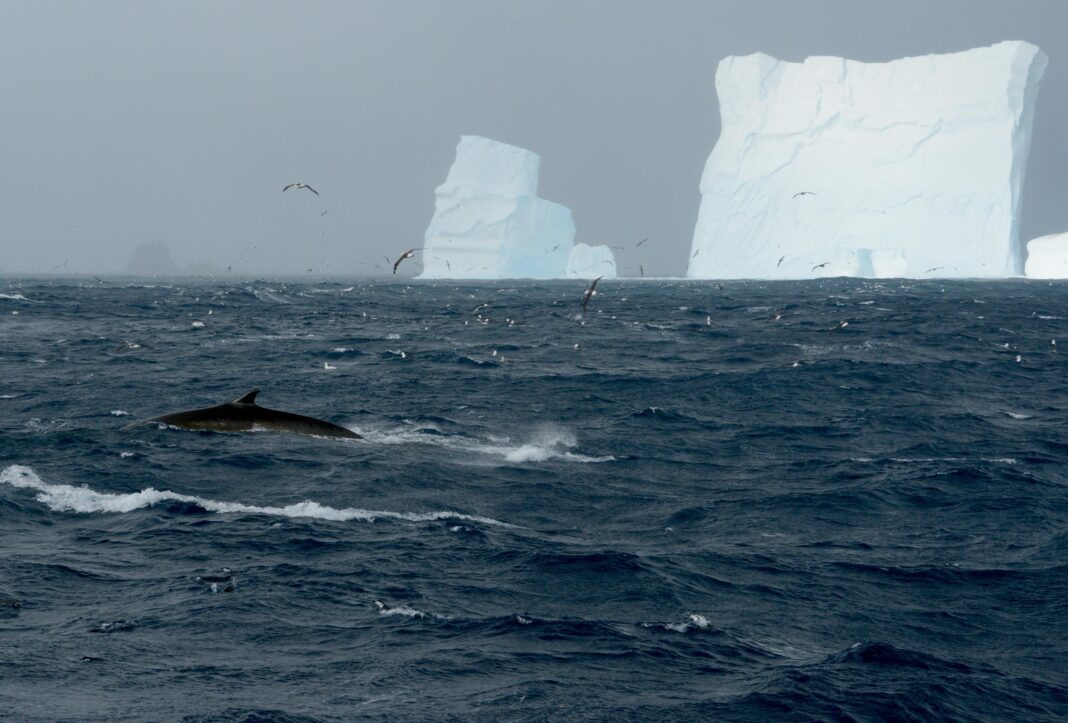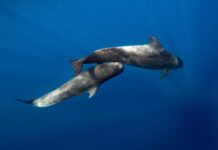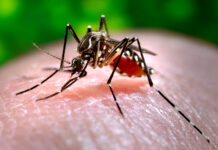A recent survey in the Antarctic peninsula found that fin whales have returned to their ancestral feeding grounds. It also reported large groups feeding together, a novel behavior for this mammal.
This species was nearly extinct due to the twentieth-century industrial whaling. Most commercial hunting took place at the northern tip of the Antarctic peninsula. There, this animal migrates for the summer feeding season. When the chasing was forbidden in 1976, the International Whaling Commission (IWC) held three population surveys between 1978 and 2004. The results showed very few fin whales left in the place.
After 40 years of whaling ban, a team led by H. Herr from the University of Hamburg, in Germany, documented a large fin whale feeding group using the lunge technique at Elephant Island, located on the northern tip of the Antarctic peninsula. They also recorded the first video ever of this behavior. Scientists suggest that feeding in high-density groups, and returning to ancestral grounds to eat, are signs of a recovering population.
Lunge feeding demands high energy spending and a big population of whales, so they can gather to fish. Furthermore, the area must have a high prey density to make feeding efficient. The scientist’s observations indicate that Elephant Island meets both criteria.
The sighting of this performance is one of the largest ever recorded for baleen whales in scientific literature. Other studies argue that reaching the pre-exploitation population could allow them to accomplish this behavior that, due to extremely low population recently, had no longer been done or observed.
More whales are good news for the whole ecosystem because they produce the phenomenon known as “the whale pump”. Whales carry nutrients such as nitrogen from the depths of the ocean, where they feed, back to the surface via their faeces. It is like an upward biological pump driven by whales, helping with nutrient recycling. Moreover, it could be crucial for atmospheric carbon regulation in the world’s most important ocean region to uptake anthropogenic CO2.
The researchers highlight that as top predators, “whales are indicators for ecosystem health. They are important ecosystem engineers, contributing to the stability and resilience of the habitat.”
Whale watching for scientific purposes
The International Union for Conservation of Nature’s Red List of Threatened Species changed the status of fin whales from “endangered” to “vulnerable”, based on projections of the global mature population size in 2018. However, the data about the number of individuals were not certain, especially in the middle latitudes of the Southern Hemisphere.
Since the 2000s, fin whale observations in the Antarctic peninsula have increased. This motivated researchers to conduct two surveys in 2018 and 2019; the first one on a vessel-supported helicopter and then on a shipboard. They sailed around the northern tip of the Antarctic peninsula to estimate the whale population and gather more information about lunge feeding.
In 2018, the most important encounters were with two groups of 50 and 70 individuals. In the first group, whales were active but not eating. In the second group, there were feeding activities. In 2019, researchers recorded five fin whale groups at Elephant Island and met the two largest aggregates counting 150 members combined.
The study marks Elephant Island as the area with the highest whale concentration. Covering 17,038 km2, it has 3618 animals, corresponding to an average density of 0.2 animals per km2. It is a high number for a large marine species compared to their concentrations in other areas, such as South California, West Greenland, and the Mediterranean Sea.
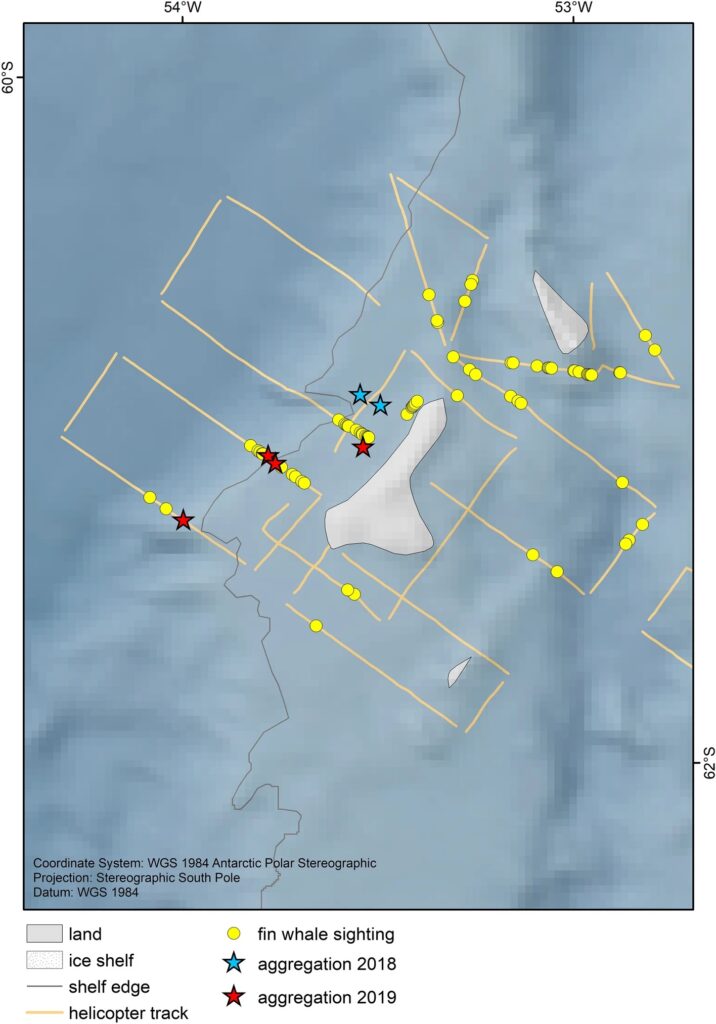
“The estimate of 7909 individuals suggests a considerable number of fin whales gathering again in a small area off the Antarctic peninsula during the austral summer feeding season. In 2000, only 4672 whales were estimated for a larger area comprising the Antarctic peninsula and the Scotia Arc region,” indicates the paper released this week in Nature Scientific Reports.
The sighting of the whales confirmed they feed together because of the presence of krill on the ocean surface and other predators such as Antarctic fur seals and several species of birds.
“The fact that it has taken decades since the end of whaling until feeding aggregations of fin whales were observed again for the first time indicates the level of depletion and its spatial extent, leaving behind too few mature individuals for a swift recovery and re-occupancy of the habitat”, researchers pointed out.
Conquering ancients’ marine territories
According to commercial hunting records from the beginning of the 20th century, whalers caught large numbers of fin whales in the area where Herr carried out this research. Hunters knew whales gathered there for feeding, especially around the South Shetland Islands and in the inshore areas of the Bransfield Strait. They only navigated Elephant Island on exceptional occasions when animals were scarce at other points.
The returning of fin whales to traditional feeding spots has been reported for South Shetland Islands, too. On the other hand, some surveys registered a low population in the Bransfield Strait. In this study, the researchers argue that humpback whales dominate now this region, thus fin whales are on the outer shelf and do not reclaim those feeding grounds. However, another explanation focuses on the number of fin whales, still small enough to expand into all their ancestral territories.
Researchers suggested that the abundance of prey in this part of the ocean could lead whales to return to their traditional feeding places. The Antarctic peninsula region is highly productive, with abundant krill, the main whale’s food. Krill did not change its distributional pattern over the last decades.
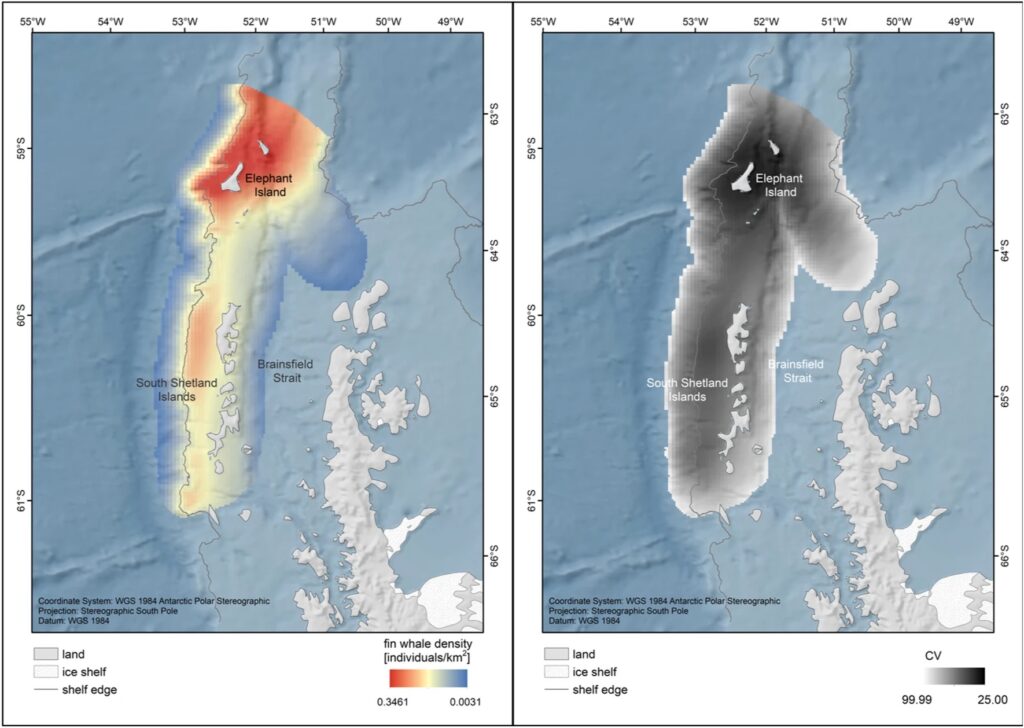
Fin whale distribution (left) and associated CVs (right) based on aerial survey data from RV Polarstern expedition PS112. Credit: Helena Herr, et al.
Conquering back traditional feeding places has been studied for other whales too, such as blue whales. Early research found that five decades after scientists assumed them depleted beyond a point of recovery, increasing sightings and acoustic recordings showed the blue whales returning to their ancestral South Georgian grounds.
The findings of Herr and the team confirm that a combination of factors such as increasing population numbers, the rediscovery of important habitats for their survival, and the transmission of this knowledge could lead large numbers of fin whales to inhabit again their ancestral feeding places.
References
Herr, H., Viquerat, S., Devas, F., Lees, A., Wells, L., Gregory, B., Giffords, T., Beecham, D., & Meyer, B. (2022). Return of large fin whale feeding aggregations to historical whaling grounds in the Southern Ocean. Scientific Reports, 12(1). https://doi.org/10.1038/s41598-022-13798-7
Pirotta, V., Owen, K., Donnelly, D., Brasier, M. J., & Harcourt, R. (2021). First evidence of bubble‐net feeding and the formation of ‘super‐groups’ by the east Australian population of humpback whales during their southward migration. Aquatic Conservation: Marine and Freshwater Ecosystems, 31(9), 2412–2419. https://doi.org/10.1002/aqc.3621
Scheidat, M., Friedlaender, A., Kock, K. H., Lehnert, L., Boebel, O., Roberts, J., & Williams, R. (2011). Cetacean surveys in the Southern Ocean using icebreaker-supported helicopters. Polar Biology, 34(10), 1513–1522. https://doi.org/10.1007/s00300-011-1010-5
Herr, H., Viquerat, S., Siegel, V., Kock, K. H., Dorschel, B., Huneke, W. G. C., Bracher, A., Schröder, M., & Gutt, J. (2016). Horizontal niche partitioning of humpback and fin whales around the West Antarctic Peninsula: evidence from a concurrent whale and krill survey. Polar Biology, 39(5), 799–818. https://doi.org/10.1007/s00300-016-1927-9
